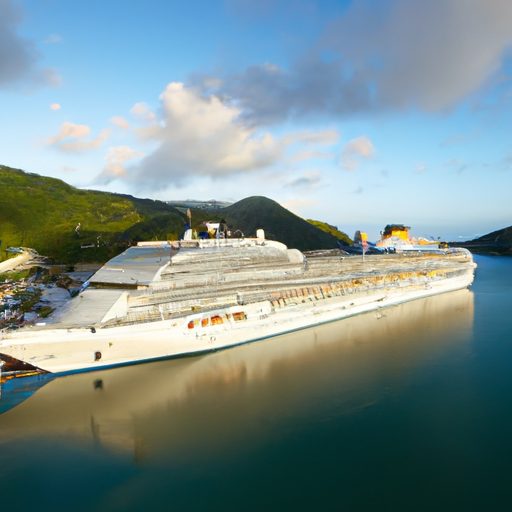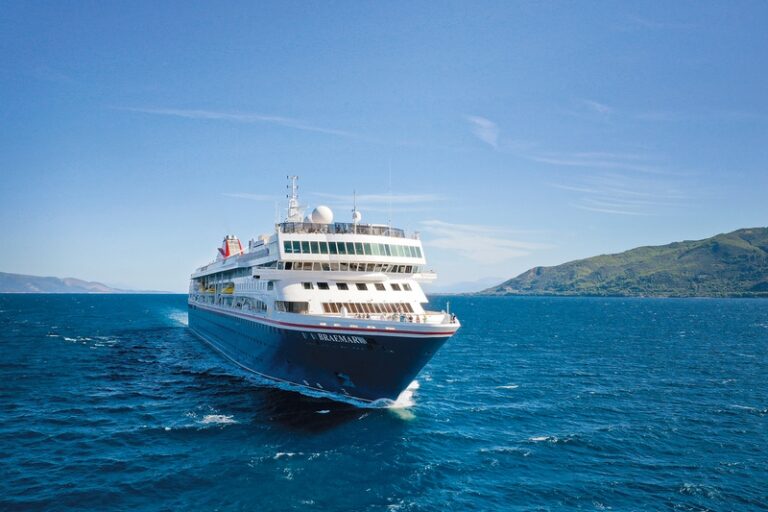The Hidden Costs Of Cruising And How To Dodge Them
You’re looking forward to your dream cruise vacation, but before you set sail, you need to know about the not-so-obvious expenses that can quickly add up. “The Hidden Costs Of Cruising And How To Dodge Them” is a comprehensive guide that uncovers the unexpected fees and charges that come with cruising. From gratuities and alcoholic beverages to specialty dining and shore excursions, this article will equip you with the knowledge to navigate through these hidden costs and help you save money while enjoying your time at sea.

1. Planning and Booking
Planning and booking a cruise can be an exciting process, but it’s important to be aware of the potential hidden costs that can quickly add up. By doing your research and being prepared, you can avoid any unpleasant surprises and ensure a smooth and affordable vacation.
1.1 Researching and Comparing Prices
When it comes to choosing a cruise, it’s essential to research and compare prices from different cruise lines. Prices can vary significantly depending on factors such as the length of the cruise, the destination, and the ship’s amenities. Take the time to explore various options and consider what is included in each package.
1.2 Understanding What is Included in the Price
While the initial price of a cruise may seem like a good deal, it’s crucial to understand what is included in that price. Some cruises offer all-inclusive packages that cover meals, onboard activities, and even certain excursions. Others may charge extra for these amenities. Make sure to read the fine print and ask questions to ensure you have a clear understanding of what is included and what is not.
1.3 Considering Extra Costs for Excursions and Activities
One of the most enjoyable aspects of a cruise is the opportunity to partake in exciting excursions and activities at each port of call. However, these experiences often come with additional costs. It’s important to factor in the cost of these excursions when budgeting for your cruise. Research the options available at each destination and determine which activities are a priority for you. This way, you can allocate funds accordingly and avoid overspending.
2. Transportation and Parking
Before embarking on your cruise, you’ll need to consider how you will get to the cruise port and whether you will need transportation at the various excursion destinations.
2.1 Getting to the Cruise Port
Transportation to the cruise port can be an unexpected expense if not properly planned for. If you live nearby, you may be able to drive yourself to the port and park your car. However, keep in mind that many ports charge parking fees, which can quickly add up. If you’re flying into the port city, you’ll need to budget for airport transfers to and from the cruise port.
2.2 Airport Transfers and Transportation to Excursion Destinations
In addition to getting to the cruise port, you’ll also need to consider transportation to and from the airport and excursion destinations. Some cruise lines offer transfer services, but these services often come at an additional cost. Alternatively, you can arrange your own transportation through taxis, rideshare services, or public transportation. Research the options available at each port and compare prices to find the most cost-effective solution for your needs.
3. Onboard Expenses
Once you’re aboard the cruise ship, there are a variety of onboard expenses to consider. These expenses can quickly add up if you’re not careful.
3.1 Gratuities and Service Charges
Most cruise lines charge gratuities and service charges to cover the cost of onboard staff. These charges are typically added to your onboard account and can amount to a significant expense. It’s important to factor these charges into your budget and be aware of the daily gratuity rates. Some cruise lines allow you to prepay gratuities, which can help you better manage your expenses.
3.2 Specialty Dining and Beverages
While most cruise ships offer complimentary dining options, they often have specialty restaurants that come with an additional fee. If you’re interested in trying these specialty dining options, make sure to budget for the extra expense. Similarly, many cruise ships charge for alcoholic beverages, soda, and specialty coffees. Consider whether purchasing a beverage package would be beneficial based on your drinking habits.
3.3 Wi-Fi and Internet Access
Staying connected while at sea often comes with a price tag. Many cruise ships charge for Wi-Fi and internet access, and the costs can be quite high. Consider whether staying connected is a necessity for you during the cruise, or if you can disconnect and enjoy the onboard activities and amenities without the need for internet access. Some ships offer free Wi-Fi in certain areas of the ship, so take advantage of those areas if staying connected is important.
3.4 Spa Services and Personal Care
Indulging in spa services and personal care treatments can be a luxurious experience while on a cruise, but they often come with a hefty price tag. Be mindful of the costs of spa services and budget accordingly if you’re planning to treat yourself. It may also be worth considering bringing your own personal care items, such as shampoo and conditioner, to avoid unnecessary expenses onboard.
3.5 Onboard Shopping and Souvenirs
Onboard shopping can be a tempting experience, with a wide variety of souvenirs, clothing, jewelry, and other items available for purchase. It’s important to set a budget for onboard shopping and stick to it. Keep in mind that prices for items onboard may be higher compared to similar items on land. Consider whether purchasing souvenirs at the ports of call may be a more cost-effective option.
4. Port Fees and Taxes
When cruising, it’s essential to understand the concept of port fees and taxes and how they can impact your overall expenses.
4.1 Understanding Port Fees and Taxes
Port fees and taxes are charges that are levied by the various ports of call that a cruise ship visits. These fees cover services provided by the port, such as security, maintenance, and infrastructure. Port fees and taxes are usually included in the total price of the cruise, but it’s important to double-check to ensure there are no surprises. Understanding these charges will help you budget more accurately.
4.2 Additional Expenses for Port Visits
While exploring the ports of call can be an exciting part of a cruise, it’s important to consider any additional expenses you may incur while on land. These expenses can include transportation to and from the port, entrance fees to attractions, meals, and souvenirs. Research the destinations you’ll be visiting and estimate the costs associated with each visit to avoid any unexpected expenses.

5. Hidden Charges for Specific Activities
Certain activities onboard a cruise ship may come with hidden charges that you should be aware of when planning your budget.
5.1 Casino and Gambling Expenses
If you’re a fan of casino games and gambling, keep in mind that these activities often come with their own costs. Establish a gambling budget before getting onboard and stick to it to avoid overspending. It’s easy to get caught up in the excitement of the casino, so being mindful of your budget is essential.
5.2 Fitness Classes and Gym Fees
Many cruises offer fitness classes and access to the onboard gym, but these amenities may come at an additional cost. If staying active and attending fitness classes is important to you, make sure to budget for these expenses. Alternatively, you can take advantage of the onboard walking tracks or participate in free fitness activities.
5.3 Photography and Photo Packages
Cruise ships often have professional photographers available to capture your vacation memories. While it can be tempting to purchase these professional photos, they can be quite expensive. If you’re interested in capturing your memories, consider bringing your own camera or opting for a more affordable photo package. However, be aware that some cruise lines may have restrictions on bringing professional cameras or drones onboard.
6. Medical Costs and Travel Insurance
Taking care of your health while on a cruise is vital, and it’s important to consider the potential medical costs and the need for travel insurance.
6.1 Evaluating the Need for Travel Insurance
Travel insurance can provide peace of mind and financial protection in case of unexpected events or emergencies. It’s important to carefully evaluate whether travel insurance is necessary for your cruise. Consider factors such as your age, pre-existing medical conditions, the length of the cruise, and the destinations you’ll be visiting. Travel insurance can help cover medical expenses, trip cancellations, lost luggage, and other unforeseen circumstances.
6.2 Budgeting for Medical Expenses
While onboard medical services are available on most cruises, they can come with substantial costs. It’s essential to be prepared for potential medical expenses by budgeting accordingly. If you’re on any medications, ensure you have an ample supply for the duration of your cruise to avoid any unexpected costs for refills. Additionally, consider packing a small first aid kit with basic medical supplies to handle minor ailments without needing to seek medical attention.

7. Currency Exchange and International Fees
If you’re cruising to international destinations, it’s important to consider currency exchange rates and any associated international transaction fees.
7.1 Managing Currency Exchange Rates
When visiting countries with different currencies, it’s important to be mindful of exchange rates and potential fees associated with currency conversion. Research the exchange rates before your trip so you can budget accordingly. Consider exchanging your currency at reputable establishments and avoid exchanging money at high-cost tourist areas to get the best rates.
7.2 Being Aware of International Transaction Fees
Using credit cards or making purchases in foreign currencies can often come with international transaction fees. These fees can quickly add up, especially if you’re making numerous purchases or using your credit card frequently. Consider bringing some cash in the local currency to avoid excessive international transaction fees. Additionally, research credit cards with no or low foreign transaction fees if you plan to use your card for purchases while on your cruise.
8. In-Room Amenities and Extra Services
The comfort and convenience of your cruise ship’s cabin are important to consider, and certain in-room amenities and extra services may come at an additional cost.
8.1 Mini-Bar and In-Room Snacks
Many cruise ship cabins come equipped with a mini-bar stocked with snacks and beverages. While these can be tempting, keep in mind that they are typically expensive. Set a budget for in-room snacks and beverages, and opt for bringing your own snacks or purchasing them elsewhere on the ship to save money.
8.2 Laundry and Dry Cleaning Services
On longer cruises, you may want to take advantage of onboard laundry and dry cleaning services. However, these services can be quite costly. Consider packing enough clothing for the duration of your cruise or opt for hand-washing certain items in your cabin to save money. If necessary, budget for laundry services but be aware that the costs can quickly add up.
8.3 Room Service Charges
Room service can be a convenient and enjoyable part of your cruise experience, but it’s important to be aware of any charges associated with it. Some cruise lines charge extra for room service, especially during certain hours or for specific menu items. Make sure to familiarize yourself with the room service policies and fees before placing any orders.

9. Miscellaneous Costs to Consider
In addition to the categories mentioned above, there are some miscellaneous costs that are often overlooked but important to consider.
9.1 Packing and Luggage Fees
Packing for a cruise involves careful consideration of luggage restrictions and any associated fees. Some cruise lines impose luggage weight limits or charge extra for overweight bags. Make sure to review the specific baggage policies and pack accordingly to avoid any unexpected fees. Consider packing versatile clothing that can be mixed and matched to minimize the number of items needed.
9.2 Transportation to and from Home Airport
Getting to and from your home airport can be an additional expense to consider. Whether you’re driving, taking public transportation, or hiring a car service, make sure to factor in these costs when budgeting for your cruise. If you live far from the airport, you may also need to consider the cost of overnight accommodations near the airport.
9.3 Vacation Attire and Accessories
Don’t forget to budget for vacation attire and accessories, especially if you’re cruising to a warm destination. Depending on the activities you have planned, you may need to purchase items such as swimwear, sunscreen, hats, and sandals. Plan ahead and consider shopping for these items before your cruise to take advantage of sales and discounts.
10. Tips for Reducing Hidden Costs
While there are many potential hidden costs associated with cruising, there are also several strategies you can employ to reduce these expenses and stay within your budget.
10.1 Set a Realistic Budget and Stick to It
Before booking your cruise, establish a realistic budget that takes into account all potential expenses. Consider all the factors mentioned in this article and allocate funds accordingly. Once your budget is set, make a commitment to stick to it and avoid unnecessary overspending.
10.2 Opt for All-Inclusive Cruises or Packages
Consider booking an all-inclusive cruise or package that includes many of the amenities and activities at a flat rate. These packages often provide a better value and can help you avoid surprise charges. You may also be able to find deals that include beverage packages, specialty dining, or Wi-Fi access, allowing you to budget more accurately.
10.3 Bring Your Own Snacks and Bottled Water
To avoid spending excessive amounts on onboard snacks and beverages, consider bringing your own non-perishable snacks and refillable water bottles. This way, you can save on the high prices often found on cruise ships. Just make sure to follow any guidelines or restrictions regarding outside food and beverages.
10.4 Research and Book Excursions Independently
While cruise line excursions can be convenient, they often come with a premium price tag. Research each port of call and consider booking excursions independently. This can save you money and allow for more flexibility in choosing the activities that interest you most. Just make sure to plan your timings carefully to ensure you won’t miss the ship’s departure.
10.5 Use Wi-Fi Alternatives and Local SIM Cards
Instead of relying on the expensive onboard Wi-Fi packages, explore alternative ways to stay connected while on land. Research local SIM card options or consider using offline maps and apps to navigate at each port of call. This way, you can avoid excessive data charges and still stay connected when needed.
By following these tips and being proactive about understanding potential hidden costs, you can enjoy a budget-friendly cruise vacation. Remember to plan ahead, set a realistic budget, and prioritize your expenses to ensure a stress-free and enjoyable experience. Bon voyage!








